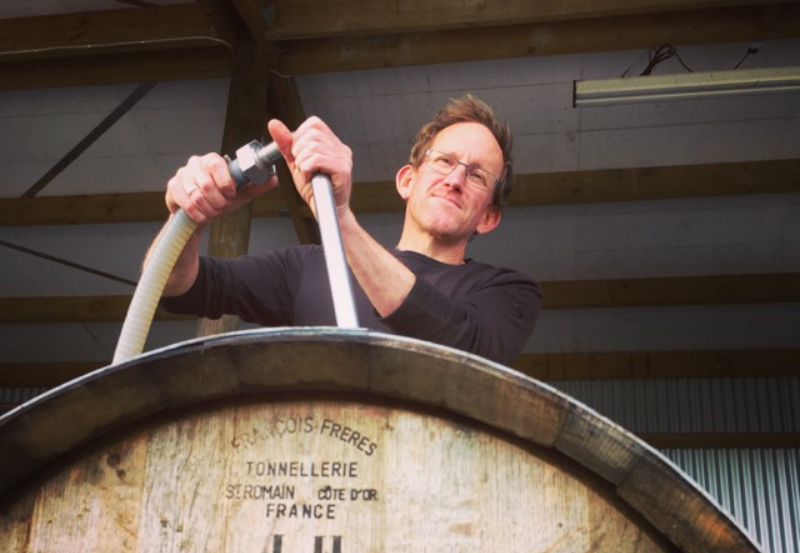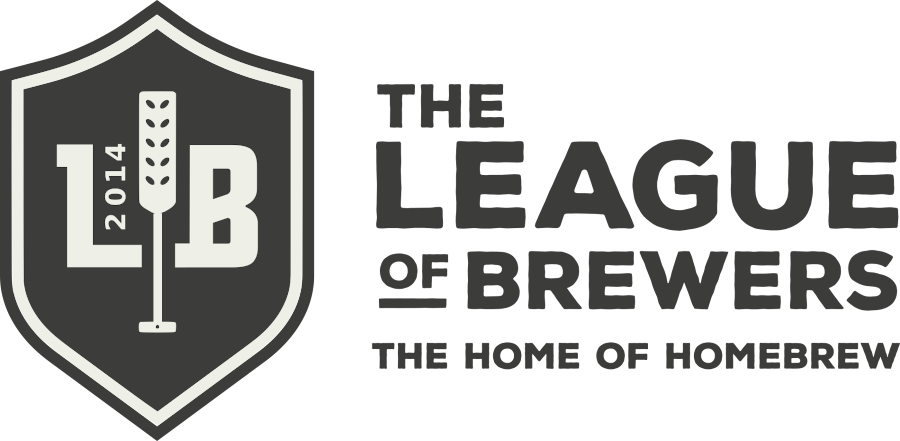For the Love of Saisons
Hello everyone. Jamie McQuillan here, former home brewer and for the past five years owner/operator of Cell Division, my tiny brewery specialising in farmhouse, sour, wild and funky beers.
The LoB team decided it would be fun to have me drop in from time to time with some words of wisdom about the beers I love to brew. First up, let’s have a chat about a personal favourite of mine - saisons.
Saisons, are a Belgian farmhouse style traditionally brewed to quench the thirst of workers during the hot summer months. What better in the hot fields than a super dry, effervescent beer displaying fruity esters, spice, zest and a refreshing hoppy bitterness? As a style, saisons offer the brewer considerable scope to be creative, while still retaining the key characteristics the drinker expects to find in the glass. What follows are some of my tips for brewing a good saison. However, as with many aspects of brewing there are a multitude of different approaches that will produce a great beer.
The water: Surprised to see this first? While my points are not listed in order of importance, I cannot encourage you enough to pay close attention to your water profile. This applies regardless of what style you are brewing, because good mash chemistry and optimal yeast health requires sufficient calcium (ideally >50 ppm) in your brewing water. The profile of your water will also influence the final character of the beer, just like seasoning a meal. There are lots of excellent resources out there to assist you to tailor your water to specific beer styles, including brewing software. The League of Brewers also plans to discuss brewing water in a later article. However, it’s not that hard or scary and the right water profile can turn an ok beer into an excellent (even award winning) beer. I have my own personal preference for a water profile for saisons which typically aims for a SO42- /Cl- ratio: that doesn’t deviate far from 1:1. You can make up your own call here, but I recommend refraining from heavy mineral additions. Importantly, if you don’t already know the profile of your source water, you should have it analysed. The League of Brewers offers an excellent and economic water testing service.
The malt bill: If you are new to brewing saisons, perhaps start out nice and simple, as you might expect from a traditional Belgian farmhouse back in the day. Something like Pilsner malt (~80%) and Wheat Malt (15-20%), or raw wheat if you have the capacity to step mash, and perhaps a touch (2-3%) of medium crystal malt to emulate the colour pick up from kettles of the old world. As a general rule, I like to cap crystal malts at around 5% to avoid the perception of cloying sweetness that larger amounts can bring. From there you can keep building your recipe(s). The scope available is something to embrace, with beer colour ranging from 5-22 SRM and abv coming in at table beer strength (~3.5-5.0%) through to super saisons at around 9.5%. The bigger the beer the more scope there is for building in malt complexity. While I think it’s great to take the stance of using Belgian malts in Belgian style beers, I’m also a big fan of using local products. I like to incorporate things like Gladfield’s Vienna Malt and Aurora Malt. There are also a number of specialty malts available that when used judiciously are great for building darker colour, all the way through to red and black. Rye malt works wonderfully well for adding a touch of spice as well as a silky mouth feel to an otherwise bone-dry beer. But be prepared for a sticky mash when using rye. My system can handle up to 20% rye malt without any issues, but adding a beta glucanase rest to your mash profile (40-50°C) and or rice/oat hulls can help. Simple sugars may be added to boost the abv and help dry out the beer.
The hops: Use your head! A good saison shouldn’t taste like a big IPA dripping with American hops and leaving your yeast struggling to show its wonderful fruity, spicy and estery profile. I like to choose a good solid bittering hop and then for later additions lean towards hops with floral, spicy and earthy characteristics that complement the wonderful esters characteristic of the style. For sure, more “traditional” European hop varieties like Saaz and East Kent Goldings are a good place to start. From there we are lucky to have a bunch of unique NZ hops with stone fruit and citrus characters that work beautifully when incorporated into saisons, and also in the closely related, hoppier farmhouse style known as a grisette.
The yeast: We are literally spoilt for yeast choice when it comes to saisons and I am always torn between working with what I know and trying out something new. A few favourites liquid yeast are: White Labs French Saison WLP590 (works a treat for super saisons), White Labs Belgian Saison 1 WLP565 (I found this to be peppery and pretty zesty), Wyeast 3711 French Saison (punchy character and silky mouthfeel), Wyeast Farmhouse 3726 (soft, pears, spice, super drinkable). For those wanting to stick to dried yeast, or if seeking a more restrained/lighter yeast character Lallemand Belle Saison is a good choice. A few quick pointers for pushing the desired yeast characters are: (1) Do not over aerate/oxygenate. Oxygen, while needed for yeast growth, also inhibits the formation of those lovely esters. (2) Don’t over pitch, but pitch well enough (try anywhere between 0.5-0.75 M cells/ml/°P). (3) Ferment warm (keeping in mind the manufacturers’ guidelines). Some saison yeasts will come into their own in the high 20s so experiment and have fun. I typically pitch at 18-20 °C and let the beer free rise to anywhere between 22-26 °C. (4) Don’t rush it. 3-4 weeks for an unfruited saison is typical in my brewery. Adjuncts: Fruits and spices work wonderfully in saisons, but should always be complementary to the base beer. Pears and quince are particular favourites of mine, while spices, like pepper and star anise, along with citrus zest, all work well (when used judiciously).
Drink and Learn! We are experiencing a renaissance of sorts when it comes to saisons in NZ, so if you are new to the style, get drinking, it’s the best way to learn and train your palate. Grab a classic Belgian Saison like Saison Dupont, then seek out some of the excellent NZ examples from my friends at Craftwork Brewery, McLeod’s Brewery, North End Brewery and Wilderness Brewery. At this point, the next best thing to do is have a crack at brewing one yourself. To help you on your way, here’s a recipe kit for a delicious thirst quenching saison I put together for The League of Brewers. Slainte!
About the author

Jamie is an award winning home brewer and the owner/operator of his tiny, part-time Dunedin brewery, Cell Division. His day job sees him working as a molecular biologist and neuroscientist at the University of Otago.
You will find Jamie writing beer geek articles for us which will no doubt feature his love of farmhouse and sour beers as well as providing useful advice on things such as yeast, fruiting, and other brewing techniques. We also have him working tirelessly on new recipes, diving into styles not previously featured in our catalogue and we may even convince him to dust off one or two of his award winning recipes for us.






